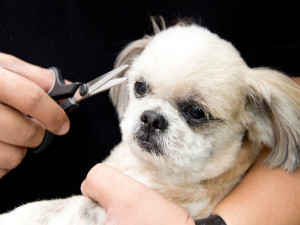Introduction
As we all know, keeping a dog’s eyes healthy is crucially important. Of course, this is also true for the Shih Tzu breed. A big, pushed-in-face eyeball of these toy dogs is the reason why they are susceptible to certain diseases.
Every Day Routine
All Shih Tzu owners should every day allot some time for tending their dogs’ eyes. Firstly, this procedure should include cleaning. Wipe the area around the dog’s eyes to get rid of tiny dirt particles and clean the hairs that will have become wet from drinking water. This routine can help you to prevent issues before they appear. Secondly, check your dog’s eyes for threatening symptoms.
Cleaning Technique
Take a canine eye wipe or a soft wash cloth and moist the cloth with water. Wipe around the eyes and dry the area afterwards to sanitize (purify) it; otherwise bacteria can grow and lead to yeast or fungi infection.
More tips to keep your dog’s eyes healthy
- prevent your dog from hanging his head out from a car window, for otherwise his eyes will be irritated;
- don’t let shampoo or conditioner get into his eyes. In order to protect his eyes while washing him, you may apply special protective ointments;
- clip hair around his eyes short or pull it up in a top knot so it couldn’t poke into the eyes;
- don’t let your dog fight with other dogs (for obvious reasons);
- try to avoid places where your dog may accidentally run across something that can damage his eyes, such as a forest with all the sticks around. Train Shih Tzu to stay on the path while walking;
- add vitamins A, C and D to the Shih Tzu’s diet;
- be caring about your pet and bring him to regular vet check-ups.
Infections
Contagious diseases shouldn’t be sneezed at. Know that only an experienced vet can define whether it is bacterial infection, viral infection or allergy. An antibacterial eye drop is usually the best course of action in these cases. Each of these symptoms should serve as a red flag:
- watery or sticky eye discharge;
- photophobia (aversion to bright light);
- scratching the eyes;
- reddish inflamed eyes;
- squinting of eyes;
- swollen eyelids;
- cloudy eyes.
These are the most commonly spread infectious diseases Shih Tzu may have:
Conjunctivitis
In case of conjunctivitis, your dog’s white will turn distinctively red or pink. Also, he will suffer from:
sticky, thick discharge;
swelling;
inflammation;
common discomfort.
There are few ways a dog can get this disease:
- by contact with another animal (bacterial form);
- by air (viral form), usually transmits during colder seasons with low humidity;
- because of allergies;
- by getting a foreign object in the eye.
The crux is that the conjunctivitis symptoms are quite hard to differ from symptoms of other diseases. Thus, you can’t help but go to a vet. Treatment will likely include antibiotic ointments to ease swelling and fight off bacteria. Besides, sticky crud should be periodically removed by a cotton ball and warm water, whereas warm compresses should be applied to ease swelling and bring down pain.
Dry eye syndrome
This disease bears a tongue-twisting name “keratoconjunctivitis sicca” and appears to be one the most common-spread ocular problems of Shih Tzus. The dryness caused by tears underproduction results in scratches and damage of conjunctiva (the mucous membrane that lines the inner surface of the eyelid and the exposed surface of the eyeball) and cornea (the mucous membrane that lines the inner surface of the eyelid and the exposed surface of the eyeball). The primary symptoms of KCS are:
- excessive yellow or greenish discharge, due to gunk deposits on the eye corner;
- pigmented cornea;
- blood vessels on the cornea.
KCS can be caused by numerous things, including herpes, disease or any others, but the main reason has nothing to do with infections and related to genetics (breed predisposition) and immune system problems. So, you’ll probably have to use lubricating eye drops till the end of your dog’s life.
Glaucoma
The symptoms of this very serious disease include:
- cloudiness;
- redness;
- enlarged pupils.
Self-treatment is not an option, only a skillful vet can help your dog in this case, by applying complex treatment, including various ointments and agents designed to relieve pressure, protect eyes neurons and treat the infection.
Natural and Home-made Soothers
Although self-treatment is by definition a vicious activity, there are some ways you can sooth your dog’s discomfort in urgent situations. You can try making a salt solution: just take a cup of lukewarm distilled water, add ¼ teaspoon of sea salt and mix. Apply the mixture by a cotton ball then tear dry. Besides you can make eyebright or chamomile tea, let it cool down to room temperature and start dripping 2-3 drops into each eye 2-3 times per day until the infection clears. If you fail to fight symptoms during a few days, consult a vet immediately.
Conclusion
In the end, it would be wise to mention that in any emergency case no internet article will be of use, contact a vet as soon as possible if symptoms seem severe so a dog could get a professional medical help.









